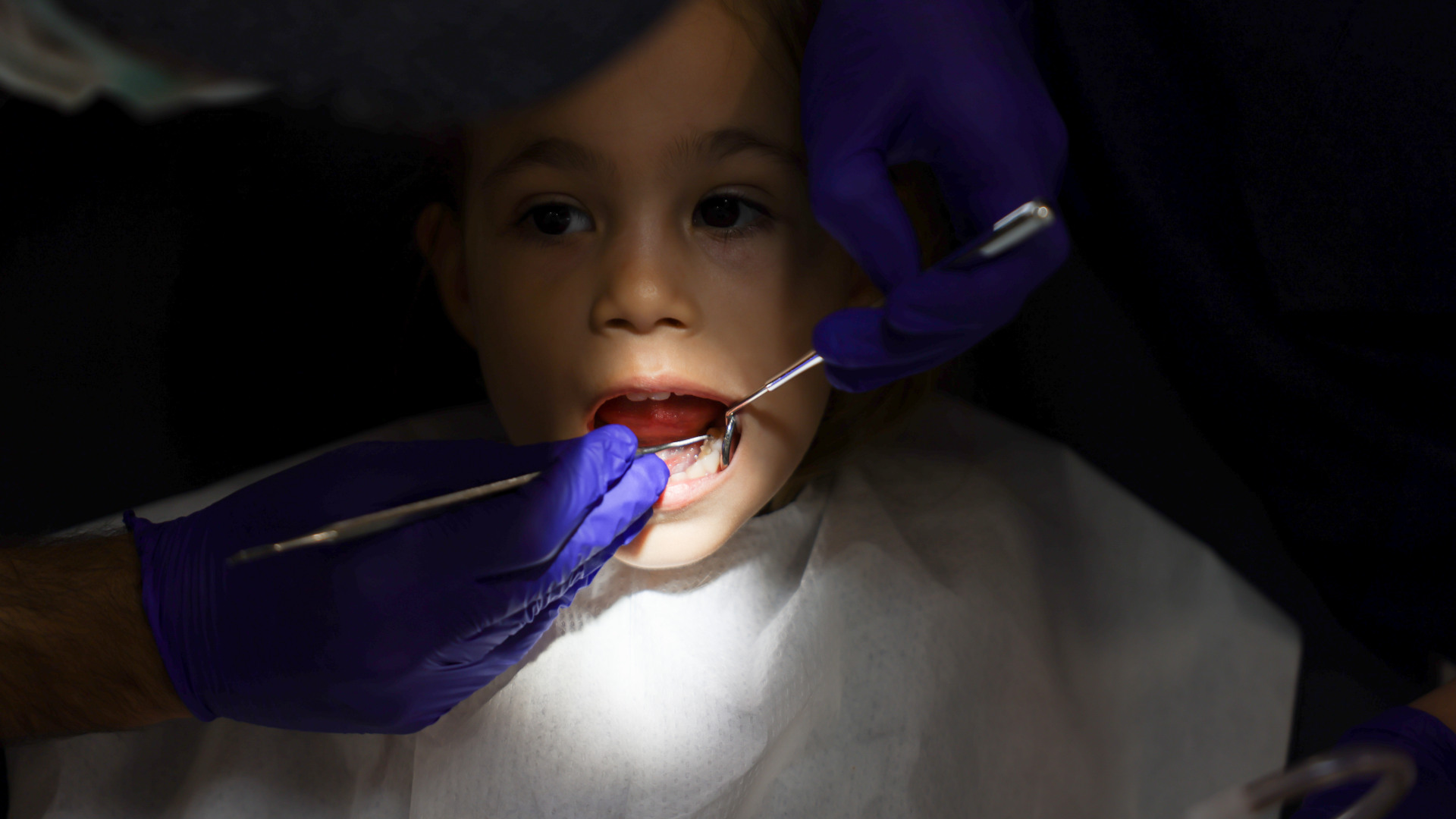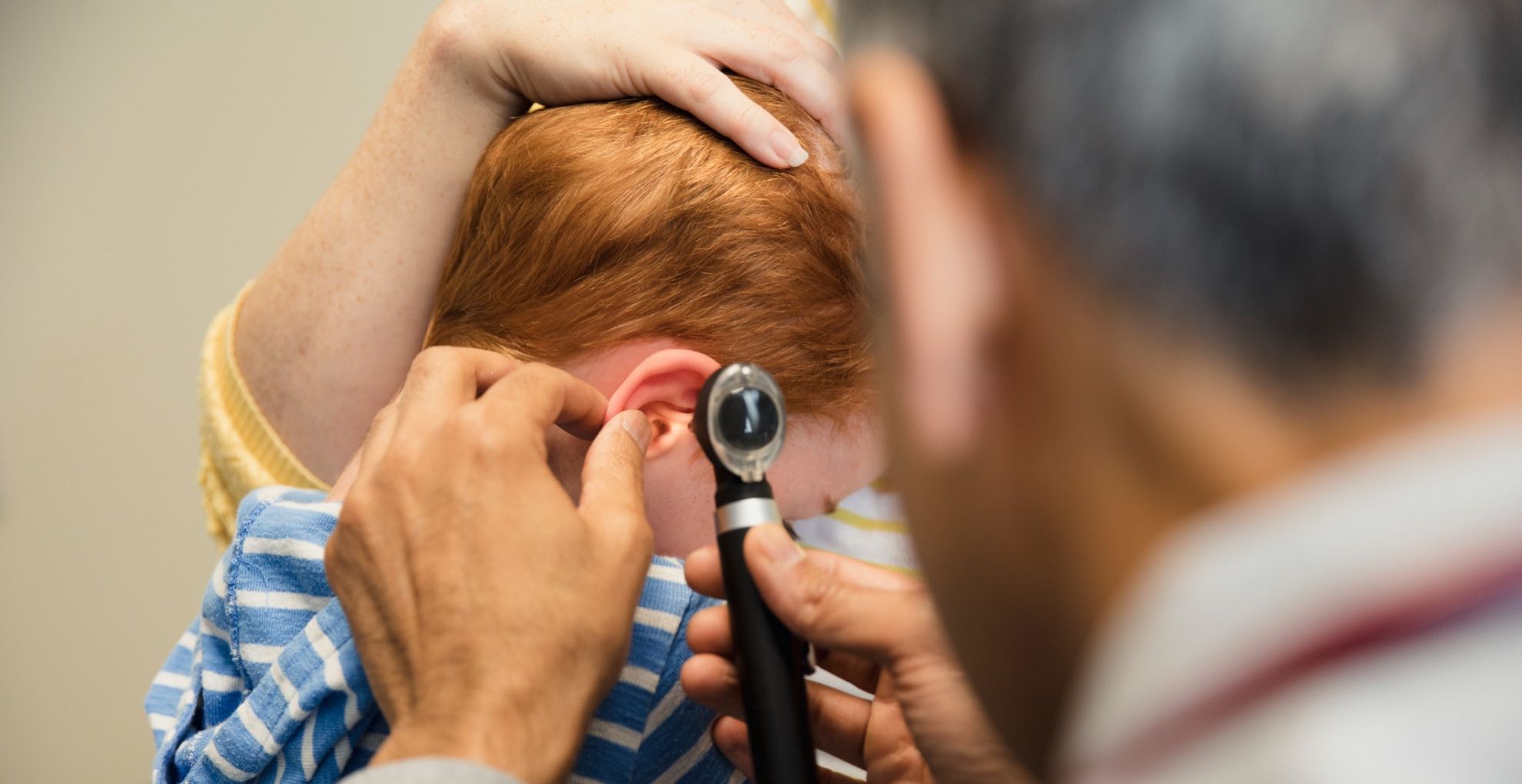Does Your Child Really Need That Root Canal?
When a dentist told Corrine Rivera that her 7-year-old daughter needed a baby root canal at her routine checkup, Rivera didn’t understand that “baby” was describing the tooth, not the size of the procedure. She imagined it was like a baby ice cream cone — less than what an adult gets, just a little bit of a root canal. Rivera’s daughter had yet to have any dental interventions other than cleanings, so Rivera didn’t realize what she was in for.
The dentist, Rivera recalled, proceeded with the root canal right then and there. It was painful for her daughter, who had to endure large tools in her mouth for the unexpected hour-and-a-half long procedure, and distressing for Rivera. “I just wanted what was best for my daughter’s teeth at the time,” she said about that 2017 experience at Pediatric Dentistry of Albany, in New York state. “Unfortunately,” she added, “having the procedure led to a hell of a lot more problems.”
A few months later, Rivera said her daughter developed an infection, and a new dentist at a different practice explained to her that a baby root canal, or pulpotomy, is a root canal on a baby tooth, not a “mini” procedure.
Rivera remains skeptical that her daughter needed a root canal in the first place, and state and federal prosecutors, it turns out, later responded to allegations that other pulpotomy cases in that same dental practice had been medically unnecessary. In October 2022, Pediatric Dentistry of Albany and 12 affiliated clinics — all operated by pediatric dentist Barry L. Jacobson and his company, HQRC Management Services, LLC — reached a settlement of more than $750,000 with the New York State Attorney General’s Medicaid Fraud Control Unit and the United States Attorney’s Office for the District of New Jersey.
The state and federal investigation was spurred by a 2017 whistleblower lawsuit filed by a former manager of five of Jacobson’s upstate New York locations. The former employee alleged that staff at the clinics performed unnessary procedures, and were pressured to increase the number of patients and procedures in order to meet a $180,000-per-month revenue goal.
A spokesperson for HQRC declined to comment on specific claims from the complaint, but insisted that the settlement did not suggest that dental care provided by the company’s practitioners was inappropriate; rather, that the recordkeeping needed to support a limited number of specific procedures was lacking. “HQRC has steadfastly denied these allegations,” the spokesperson stated, adding that the company has “cooperated fully with the five-year government investigation that followed, and ultimately settled over record keeping and billing issues that occurred at a few of its offices several years ago that have long ago been addressed and corrected.”
According to the settlement agreement, Jacobson and his company admitted that “in some instances, between 2011 and 2018, some dentists affiliated with HQRC performed and billed Medicaid for therapeutic pulpotomies not supported by the medical records maintained at the respective HQRC affiliated dental practices.”
New York state officials have not revealed the exact number of investigated procedures performed under the HQRC umbrella, and the experience of Rivera and her daughter was not, at least to Rivera’s knowledge, scrutinized as part of the lawsuit and subsequent settlement. This could mean that despite their experience, this particular “baby root canal” was medically necessary.
And according to experts who spoke to Undark, while some patients are likely to get more treatment than others, the main goal of pediatric dentistry is to promote oral hygiene, mediate pain, and keep baby teeth healthy until the adult teeth come in, said Donald Chi, a pediatric dentist and professor of oral health sciences at the University of Washington.
Still, deciding how to treat young patients in dentistry isn’t always straightforward, and the challenge is compounded by a relative lack of evidence and clinical guidance, compared to other medical research. Dentistry research is far smaller in scope and often plagued by funding biases. And while there’s good evidence that less invasive alternatives to fillings work well in kids, those alternatives haven’t been as widely adopted. Several dental experts also stressed to Undark that not every case is not the same — what might work well for one child may not work for another.
Worsening the problem, experts say there’s a strong economic incentive to focus on interventions, especially at practices that serve Medicaid or the Children’s Health Insurance Program, also called CHIP, which have exceptionally low reimbursement rates in many states. This may lead some practices to turn to private equity firms, which gives investment companies a hand in the operations of medical practice and may incentivize unnecessary treatments. (A private equity firm invested in HQRC Management. According to the plaintiff’s complaint, the practices’ revenue was mainly from Medicaid.)
This persistently murky tableau of incomplete science and financial incentivizing, alongside worrying lawsuits, can cast a shadow on a whole profession, some experts say. And it leaves patients like Rivera to wonder and worry whether their own children’s dental interventions were rooted in good-faith medical decision making, or something else entirely.
Baby teeth are, of course, temporary. And anyone who has ever tried to brush a reluctant toddler’s teeth knows firsthand that those tiny molars don’t always get high-quality home care. But their impermanence doesn’t mean that care isn’t important — if those teeth get ignored, it’s likely to cause problems with adult teeth later on.
As a specialty, pediatric dentistry is a little more than a century old. In 1909, about 70 years after the first U.S. dentistry college opened, a dentist named Minnie Evangeline Jordon established the first practice just for children. A few years later, she wrote that her male colleagues were glad to be rid of their pediatric patients “so that they could settle down to the serious work of dentistry — the making of bridges and plates.”
Today, although any dentist can treat kids, there is a thriving subspecialty of practices specializing in pediatric dentistry. There are more than 200,000 dentists in the country, about 8,000 of whom are pediatric specialists — a full-fledged discipline, with specialized training, a national professional organization, and journals like Pediatric Dentistry Journal and Journal of Clinical Pediatric Dentistry, where dentists publish their research into best practices into the field. Some of that research has bolstered longstanding claims: Regular brushing with fluoride toothpaste helps prevent cavities, early dental visits (before age four) reduce the amount of treatment needed later, and fluoride treatments such as gels, varnish, and mouth rinses may be valuable.
These measures are engaged in a sustained battle with the bacteria that create acids that corrode teeth. By physically removing stuck food that feeds the bacteria, and by strengthening the enamel with fluoride, these measures can prevent cavities and the proliferation of the decay-causing bacteria that can linger in a child’s mouth far past when their baby teeth fall out.
But, some experts say, it’s difficult for dentists to translate pediatric dentistry research to practice. Review articles, which evaluate a body of research on a particular subject, conclude that findings regarding pediatric dentistry have low certainty. For one thing, much of the relevant research that does exist has a high risk of bias, according to Shaun Sellars, a general dentist in Suffolk in the United Kingdom, because it is paid for by players in the industry, such as manufacturers of dental materials. Dentists “don’t do a lot of practice-based research either,” said Sellars, who is also the ethics columnist for the British Dental Journal. “There’s the funding issue there,” he added. “Because dentists, if they’re not hands in mouth, they’re not making money.”
Still, research on evidence-based practices and technology are advancing, and quickly. In dentistry schools “half of what we teach is out of date in five years,” said David Johnsen, a professor of dentistry at the University of Iowa. This can make it hard for providers to keep up with new findings. According to Sellars, many dentists face barriers to making evidence-based decisions, such as not having enough time to follow new studies or not having access to research articles behind paywalls. And even if dentists do read the literature, Sellars said, “not enough of it is relevant to what we actually do in practice.” Oftentimes, he added, “dentists will find what works for them, or what they believe works for them, and just continue to apply that.”
Recently, research has called into question common procedures used to fight cavities in kids. Evidence shows that fillings aren’t necessarily better than noninvasive alternatives, such as silver diamine fluoride, an inexpensive liquid that can slow decay, or caps that can be pushed onto the tooth (sometimes called the “Hall Technique”). Neither of these alternatives require drilling, filing down a tooth, or using anesthetics, said Nicola Innes, a professor of pediatric dentistry at Cardiff University.
Sellars lamented that there aren’t many resources, such as clinical guidelines, that would help dentists navigate the complex situations they face every day in an evidence-based way.
Dentistry decisions aren’t always straightforward. There are a wide range of approaches over how to treat dental cavities — one of the most common disease treatments in a dental office — in kids, including the kind of baby root canal that Rivera’s daughter received. As Johnsen put it: “If you get 10 really good dentists around a patient or a case and you say, ‘What’s the right treatment plan?’ you may get six or 10 or 11 different opinions.”
When a child comes in to see a dentist with a cavity, deciding how to treat a child’s cavity can be complicated, Chi told Undark. The dentist has to consider: How deep is the cavity? How much has it progressed since the patient’s last visit? Does the child appear to have regular brushing habits? Does the child have a risk factor for tooth decay? Might the tooth fall out soon?
If the cavity is not too deep and the tooth might fall out soon, the dentist might opt to do nothing and check again in six months. Or the dentist might slow the decay by painting on diamine fluoride to halt or slow decay (a downside: the material stains the tooth black).
If a dentist believes the cavity needs more intervention, many may choose fillings. “The problem with fillings is that they don’t do very well in children’s teeth,” said Innes, because baby teeth are small and wet, and kids tend to wiggle. Injecting anesthesia and drilling can also be unpleasant. There’s solid evidence, from her research and others, that fillings aren’t necessarily better than the noninvasive alternatives: silver diamine fluoride or caps.
When a cavity becomes so deep that a tooth’s pulp becomes infected, options include pulling the tooth or performing a root canal. Both have downsides, Innes said. A gap left from a pulled tooth can allow teeth to twist and migrate, which can lead to a need for orthodontia later. For a root canal, a child needs to be able to sit for a long time, first during the root canal and again when the tooth is shaved down and a crown is put on. Baby root canals come with a risk of infection, as Rivera said happened with her daughter in New York state. For instance, the Centers for Disease Control and Prevention recently issued a health advisory because multiple outbreaks of nontuberculous mycobacteria infections have occurred in children who received pulpotomies in pediatric dental clinics where the dental treatment water contained high levels of bacteria.
For many children, extensive dental work such as multiple root canals or fillings may require general anesthesia. But it’s uncomfortable to have a tooth pulled, even when a child is anesthetized and the procedure is painless, Innes said.
Anesthesia is also expensive, and it can have real risks for kids, including, in very rare cases, serious injury and death. More commonly in the short term, “they can have some attachment disorders, some night terrors, bedwetting, things like that,” said Innes. “And in the longer term, there was a very small amount of evidence that it probably doesn’t do them any good neurologically.”
Most dental treatments, several experts stressed to Undark, should be preventative. “I’d much rather spend my time telling people and helping people remain healthy than treating someone for a root canal, said Margherita Fontana, a professor at the University of Michigan School of Dentistry, adding: “They’re not having fun, and I’m not having fun. I mean, it’s not a fun thing to do to something to someone that you know is in pain.”
Unfortunately, Fontana said, there’s little data to indicate which patients are most at risk for dental disease, and how to best prevent it. “We need better prediction tools, in general, for children and for adults,” she added. “Many times, we are reactive to the damage rather than trying to prevent the damage.”
Part of the issue of prioritizing prevention, Fontana and other experts say, is an incentive system that offers few rewards for prevention-centered approaches — and large payouts for interventions.
Fontana’s research focuses on predicting dental health risks and using easy interventions like silver diamine fluoride, but generally requires routine dental visits to keep an eye on whether the cavity is progressing.
“I just have happy kids sitting in the chair. I’m doing things and testing things that I think are going to be super easy, fast, and accessible,” she said. “But then I know that at the time to get translated into practice is going to be difficult, because there’s no good way for people to get reimbursed to do those things.”
When more robust research supports a particular dentistry tool or technique, there may still be financial barriers for widespread use. In many states in the U.S., less invasive treatments and preventative measures, including fluoride varnish and silver diamine fluoride, are reimbursed at a much lower rate than more invasive ones, which may make them less likely to be adopted into practices. And dentists don’t get paid at all for taking time to walk a patient through their potential treatment options. If dentists “don’t physically do something in your mouth, they do not get reimbursed,” said Fontana.
Reimbursement can be particularly difficult for dentists who accept Medicaid or the Children’s Health Insurance Program, which serve more than 41 million kids and tend to have much lower reimbursement rates than private insurance or private pay rates. While overhead costs are increasing due to inflation, data indicate that Medicaid reimbursement rates have failed to keep up. Those problems can be especially acute in practices that are under pressure from owners or investors to make cash.
“You’re fighting a system where the driver is doing something — dentists don’t get paid to prevent disease,” Fontana added. “I don’t think it’s ever going to change if the system doesn’t change.”
With low reimbursement rates for preventative measures like cleanings and fluoride applications, it’s hard to imagine how pediatric dentists earn more than general dentists. But Chi said that a key component of pediatric dentistry “is to provide high quality care as quickly as possible. And the main reason for that is that children have short attention spans.” That also means that a pediatric dentist can potentially book more patients in a day than a general dentist can, which may lead to more income.
Dentists that accept Medicaid or CHIP face other challenges in billing and running a practice. Medicaid is a joint federal-state program, but it varies from state to state, explained Jason Ray, a Texas lawyer with experience in Medicaid dentistry-related lawsuits. In addition to low reimbursement rates, some Medicaid programs also require dentists to do more paperwork than the state’s dental board generally does, such as getting consent for each visit and each procedure, which could add to administrative costs. Medicaid audits can also be time consuming.
Ideally, a dentist would have a mix of patients, some who pay with private insurance, others out-of-pocket, and some Medicaid patients. However, dentists often don’t achieve a good balance. Research shows that dentists who treat more Medicaid patients are more likely to be located in a majority non-White zip code, a rural area, or high-poverty zip code. Because of Medicaid’s low reimbursement rates, Ray pointed out, one way for a dentist to make money is to see a high number of patients and do a large number of procedures.
There’s no doubt that this could lead to incentives to do procedures that may not be necessary, Ray said. An analysis of California’s Medicaid program in 2012 indicated that about 8 percent of dentists reviewed that provided Medicaid services to children met certain thresholds for questionable billing. The average general dentist performs root canals on 5 percent of pediatric patients. In the sample reviewed, the threshold of questionable billing was 18 percent, which about 2 percent of the Medicaid dentists exceeded.
A 2022 analysis of dentists found that about 33 percent treat at least one Medicaid patient. Those that do may also be tempted by the offers of private equity firms, which can lead to big payouts, but might also encourage practices to prioritize profits over evidence-based care. (Firms often don’t pay penalties in cases of fraud.) A 2013 report prepared by a U.S. Senate committee noted that corporate-managed “clinics tend to focus on low-income children eligible for Medicaid. However, these clinics have been cited for conducting unnecessary treatments.”
Whether Rivera’s daughter’s procedure was one of those unnecessary treatments is something that she and her family may never truly know. But she told Undark that the experience has left her rattled — even though she and her daughter, now 13, have found a Medicaid-accepting dental practice that they say they’re generally happy with.
Still, Rivera says that ever since her daughter received that “baby root canal” six years ago, she has deeply hated going to the dentist. “She remembers that day,” Rivera said, “very clearly.”
Christina Szalinski is a freelance science writer with a Ph.D. in cell biology based near Philadelphia.












Comments are automatically closed one year after article publication. Archived comments are below.
In 2009 I reported on a pediatric dentistry chain (with 69 clinics) called Small Smiles that was doing unnecessary baby root canals for Medicaid money. The Department of Justice fined them $24-million for the alleged fraud and abuse. The company put profit over compassion for children.